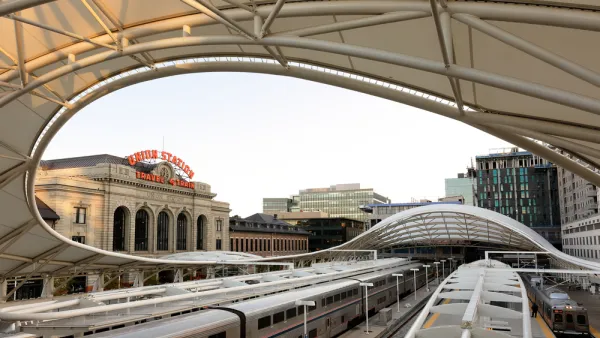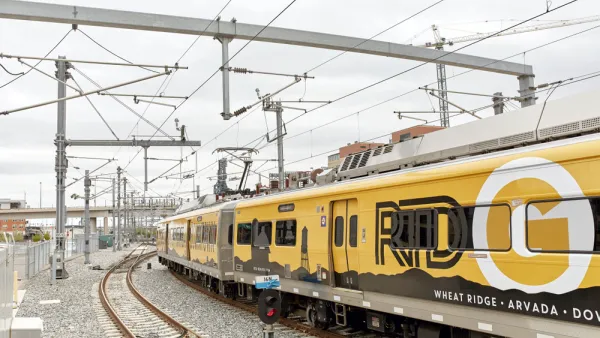Alex Schafran considers Denver's unique position as a trailblazer in suburban retrofitting and sustainable region-building, as an ambitious mass transit project grapples with a tradition of sprawl and fragmented politics.
Denver may not be the first city that springs to mind when it comes to avant-garde urbanism, what with its sprawling suburbs and historic craftsmans – but it is precisely for those traditionally American qualities that is now poised to reshape the way we think about the structure and hierarchy of metropolitan regions. As the Denver Metro area moves forward with FasTracks, a far-reaching expansion of its mass transit system, municipalities are launching corollary planning initiatives to prepare for the needs of a more regionally connected population.
While Downtown Denver pursues more transit-oriented development, it is suburban retrofitting that promises to set a standard for the regionally-conscious adaptation of suburbs elsewhere in the country.
"Denver is, in many ways, the prototypical 20th-century American city," Schafran writes — "a 'city of homes' (as the urban historian Carl Abbott deemed it), a fragmented and sprawling metropolis where the single-family home dominates land use... most of the region is a phenomenally extensive grid of interlocking municipalities, some of which — like Aurora — occupy space in three different counties."
These patterns of geographic development have produced a complex political backdrop for cooperation between local governments. "The history of incorporation and annexation is like a municipal game of Risk, with the rewards being tax base and territory. Aurora... just east of Denver, is now more than half the size of its more famous neighbor, and prefers to call the region the 'Aurora-Denver metro area.' Given the unprecedented cooperation between rival municipalities needed to complete the lengthy planning process, as well as the popular vote across eight counties to raise tax revenue in libertarian Colorado, we have to thing [sic] of FasTracks as a borderline miracle in American planning."
FULL STORY: Retrofitting a Rocky Mountain Metropolis

National Parks Layoffs Will Cause Communities to Lose Billions
Thousands of essential park workers were laid off this week, just before the busy spring break season.

Retro-silient?: America’s First “Eco-burb,” The Woodlands Turns 50
A master-planned community north of Houston offers lessons on green infrastructure and resilient design, but falls short of its founder’s lofty affordability and walkability goals.

Delivering for America Plan Will Downgrade Mail Service in at Least 49.5 Percent of Zip Codes
Republican and Democrat lawmakers criticize the plan for its disproportionate negative impact on rural communities.

Test News Post 1
This is a summary

Test News Headline 46
Test for the image on the front page.

Balancing Bombs and Butterflies: How the National Guard Protects a Rare Species
The National Guard at Fort Indiantown Gap uses GIS technology and land management strategies to balance military training with conservation efforts, ensuring the survival of the rare eastern regal fritillary butterfly.
Urban Design for Planners 1: Software Tools
This six-course series explores essential urban design concepts using open source software and equips planners with the tools they need to participate fully in the urban design process.
Planning for Universal Design
Learn the tools for implementing Universal Design in planning regulations.
EMC Planning Group, Inc.
Planetizen
Planetizen
Mpact (formerly Rail~Volution)
Great Falls Development Authority, Inc.
HUDs Office of Policy Development and Research
NYU Wagner Graduate School of Public Service





























